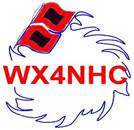Severe Weather Coordination Message #2 – Saturday 5/28/22 Severe Weather Potential
Hello to all…
..Isolated to Scattered Strong to Severe Thunderstorms remain possible Saturday Afternoon into early evening any time between 12-6 PM across interior Southern New England along and north and west of the I-95 corridor. Strong to damaging winds, hail, frequent lightning, and heavy rainfall with urban and poor drainage flooding are the main threats. The Storm Prediction Center (SPC) has continued interior Southern New England in a marginal risk for severe weather along and north and west of the I-95 corridor..
..SKYWARN Self-Activation will monitor the severe weather potential for Saturday Afternoon and Evening..
A frontal system will cross Southern New England Saturday afternoon into the early evening with the potential for isolated to scattered strong to severe thunderstorms. The headlines depict the current thinking which is little changed from last night. Key factors that are also little changed from last night include:
1.) Morning showers and thunderstorms and their evolution into isolated strong to severe thunderstorms as the day progresses along with clearing behind this activity to allow for more isolated to scattered strong to severe thunderstorms to allow for heating and destabilization to increase instability levels.
2.) Cooling aloft in the atmosphere to also increase instability
3.) Overlap of instability with sufficient wind shear profiles to allow for isolated to scattered strong to severe thunderstorm development.
SKYWARN Self-Activation will monitor the severe weather potential for Saturday Afternoon and Evening. This will be the last coordination message as we shift into operations mode. Below is the NWS Boston/Norton Area Forecast Discussion and SPC Day-1 Convective Outlook:
NWS Boston/Norton Area Forecast Discussion:
https://forecast.weather.gov/product.php?site=NWS&issuedby=BOX&product=AFD&format=CI&version=1&glossary=1&highlight=off
SPC Day-1 Convective Outlook:
https://www.spc.noaa.gov/products/outlook/day1otlk.html
Respectfully Submitted,
Robert Macedo (KD1CY)
ARES SKYWARN Coordinator
Eastern Massachusetts ARES Section Emergency Coordinator
Home Phone #: (508) 994-1875 (After 6 PM)
Home/Data #: (508) 997-4503 (After 6 PM)
Work Phone #: 508-346-2929 (8 AM-5 PM)
Email Address: rmacedo@rcn.com
http://ares.ema.arrl.org
http://www.wx1box.org
Like us on Facebook – http://www.facebook.com/wx1box
Follow us on Twitter – http://twitter.com/wx1box

